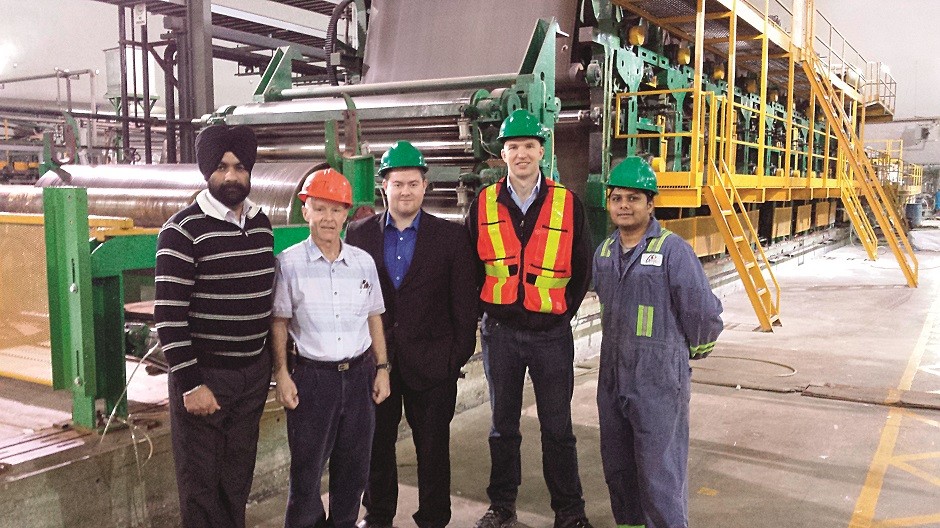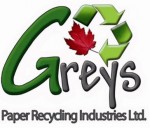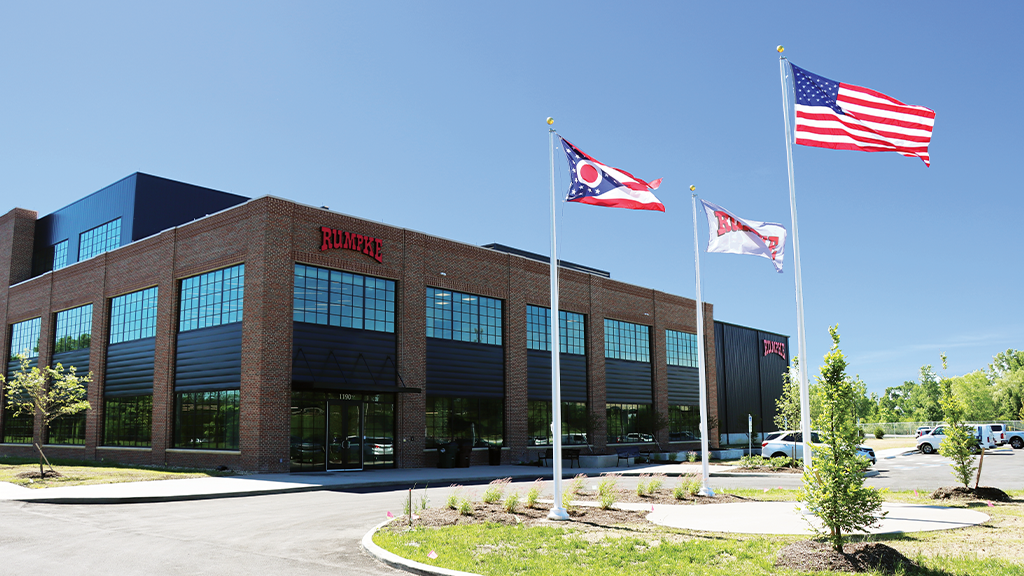Truly Closing the Loop on Paper
As both a recycler and paper product producer, Greys is leading the way in more ways than one

Since Recycling Product News last talked with Edmonton-based Greys Paper Recycling Industries, much has changed. The company first started producing closed-loop recycled paper products from a combination of 100 percent post-consumer paper and end-of-life cotton clothing and linens in the summer of 2013.
“We’ve definitely tweaked our process, and have come up with a brighter product, with increased tensile strength,” explains Nathan Mahon, the company’s account manager. “We now have a recipe that allows our paper to be recycled more than the industry-average of six or seven times. It’s continuous. Our product can come back to us more than any other type of recyclable paper material.”
Greys is currently producing about 10 tons per day of their new paper product, which is a much “cleaner” product than previously, and are working towards revamping operations to achieve 24/7, 40-tonne daily production.
“We use both white linens and cottons,” continues Mahon. “We mix that with our incoming recycled paper material, which helps increase our produced paper’s whiteness, natural brightness, clarity and tensile strength due to the stronger fibres present in the final product.
“We also use no harsh chemicals or bleach. Our paper is purely natural, and acidic-free, so it absolutely doesn’t break down like other products.”
Generally, after six or seven times being recycled, paper fibre begins to break down so that it cannot be reprinted or even pressed. According to Mahon, “Our formula is now exceeding those numbers, and we’re hoping to continue to exceed them in the future.”
Completing the closed loop
Greys Paper’s President and CEO, Rajan Ahluwalia, started recycling paper in 1989, in India where he was born. He began by using various colours of denim to make coloured paper. He immigrated to Canada in 2006, and the Greys Paper Recycling Industries’ facility in Edmonton was built in 2010, with production starting in 2013.
“We’ve greatly streamlined our manufacturing since then,” says Mahon. “We have a printing company that we work with independently, and all our product is customizable. Anything needed in a paper product, we can produce it. Envelopes, letterhead, with business logos and slogans, all on 100 percent recycled, post-consumer waste paper.”
Greys operates out of a $20-million, eco-friendly, domed facility located on the site of the world-renowned Edmonton Waste Management Centre (EWMC). They run a fleet of trucks, charging a collection fee for pickup, while drop-off at their facility is free. Linens come mostly from local hospitals and hotels. Incoming material is dumped and sorted for production of different grades. Greys then washes it, breaks it down and combines the recycled textiles with paper in their process. Mahon says it takes about four hours, from a recycled material coming in, to the finished product.
Recyclable materials accepted include: office wastepaper, white cotton (bed sheets, pillow cases, towels, uniforms and clothing), and old blue jeans (denim). Major end markets for Greys recycled paper product include local law and accounting firms, as well as hospitals and hotels, who then return their used paper back to Greys for further recycling, thus truly completing a closed loop.
The world’s most environmentally- friendly paper producer
Greys Paper Recycling Industries’ facility is unique in many ways. The 68,000 square-foot plant consists of two energy efficient monolithic domes. Built with R60 insulation, the buildings use solar sun pipes for most of their lighting and will eventually incorporate solar power. Sitting on seven acres, the complex includes a 50,000 square-foot dome housing the paper recycling plant (252 feet in diameter and 84 feet high – making it one of the very largest in the world of its type) and a second dome (10,000 square feet, 110 feet in diameter and 38 feet high). These domes are connected by an office building that is 80 feet long.
“Our building is made of rebar, second layer foam, first-layer foam and then layers of interior dome concrete,” explains Mahon. “The energy efficiency is based in the high thermal properties. Because they are dome-shaped, they take on an ‘igloo effect’. Plus, we use steam from EWMC boilers and other machinery; the heat is condensed and funnelled back to us.
“It’s also an architecturally-sound structure,” Mahon continues. “It’s one of the only locations in Alberta that is tornado-proof and is even a safe haven for anything man-made.
“One of our main challenges is simply the fact that we have ‘recycling’ in our name. It’s not that people do not want to be environmentally friendly, but they automatically think of us with singularity as a recycler. We are actually the only company in the world, currently, that recycles end-of-life product and puts out the same product for consumer purchase, all in-house.
“The challenge is just in getting our name out there and making people understand that we are currently the most environmentally-friendly paper-producing company in the world. We have zero impact on virgin pulp – we use no virgin pulp. We’re 100 percent post-consumer waste – not 85 percent, or the standard of 30 percent – we are 100 percent. We also reuse our water several times. It’s filtered by the EWMC water purification system, to produce clear, clean water.
“We recycle paper and produce paper product in-house, and we do not have to ship anywhere. Generally, material will go through a recycling plant at point A, and then 100 miles away is point B, a large plant that will manufacture it back into paper. We do all of this in-house.
“There are similar systems out there, but it’s not the case elsewhere that paper goes in at one end to be recycled, and then at the other end of the line, the exact product that came in is being handed back as a finished product. This is the closed-loop concept that Rajan brought from India with him, and evolved since 2010.
“It takes 24 full-grown trees to produce one tonne of paper. When our plant runs 24/7, we save about 375,000 mature trees. Due to our reuse of water, we save 7,000 gallons each year, and we currently save about two tons of wood per day.”
Plans for expansion
Greys Paper Recycling Industries is not only a true closed-loop business, but it is completely localized in the province of Alberta. The company’s post-consumer paper is supplied by local companies and citizens, and end markets for their finished, recycled paper are also located within Alberta. Though Mahon remarks this won’t be for long, as they are looking at expansion in the future.
“We have really good support from our local government. The City of Edmonton fronted $5 million towards the building of our facility, so they are a major investor. And when working with us, our customers get the certification of closed-loop recycling, signed on behalf of the Mayor of Edmonton.”
Mahon says their growth now depends largely on their outreach and public education efforts.
“Currently, because we have just recently gone into production on our new paper, it is largely dependent on our sales efforts, getting the name out there, and people using the product. We basically compete with big players, like Staples and Grand & Toy. We’re trying to reach out to schools, trying to get them to use more of our paper, and for elementary kids we’re working on arranging field trips up here to show them how the paper they are writing on is being made, and that it is being made locally.
“You have to do it early,” continues Mahon. “When they grow up, many will keep the values they are taught about recycling.”
As for the future of Greys Paper Recycling Mahon says they are looking at opening five plants in China and six in the United States, where the large populations in both countries will work to their advantage, as a smaller paper producing company. Specifically, they are looking at starting operations soon in Beijing, China and in Austin, Texas. With the larger populations (China being approximately 80 times the population of the U.S.) Mahon says “these countries are in dire need of a company that can do what we can do.”



